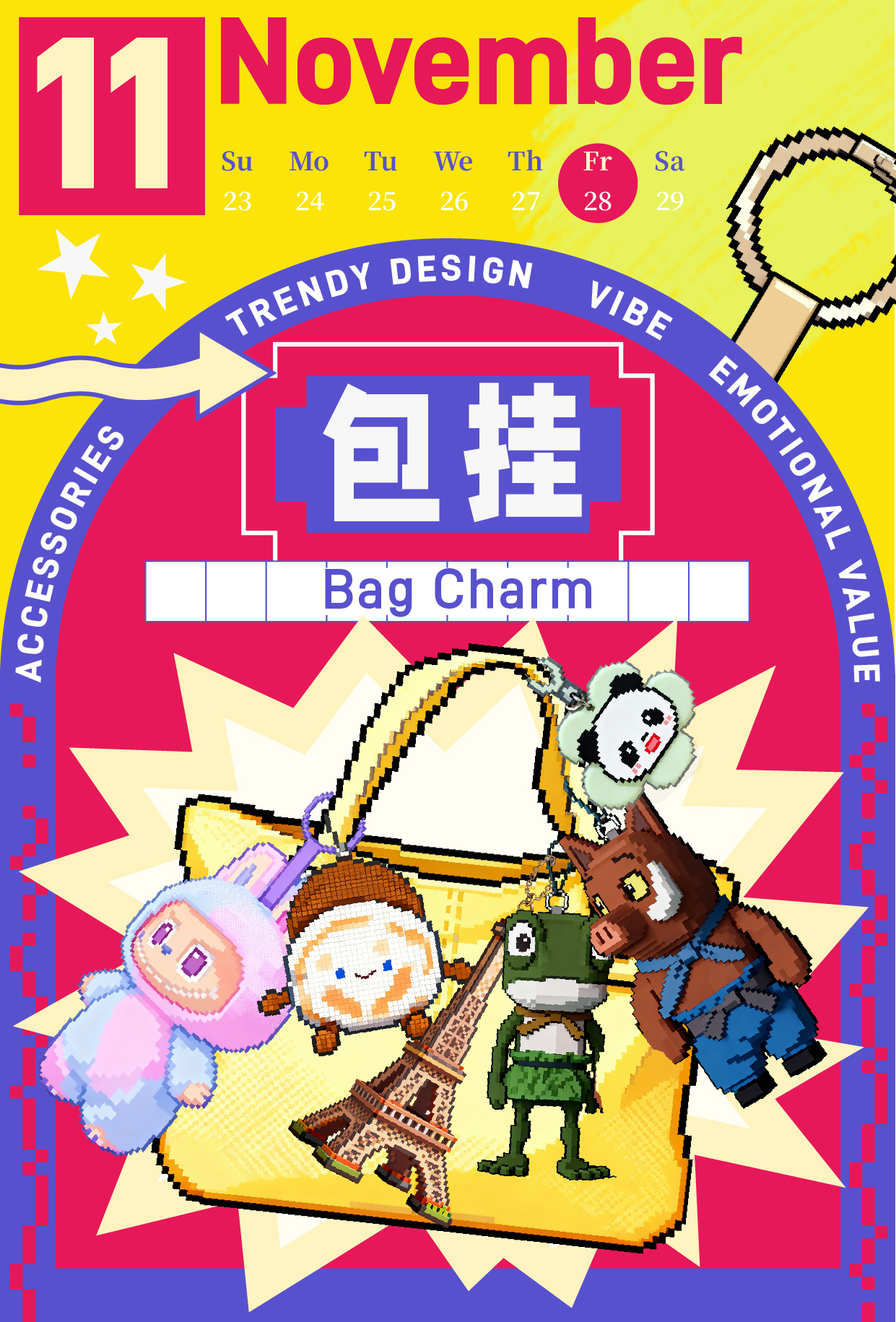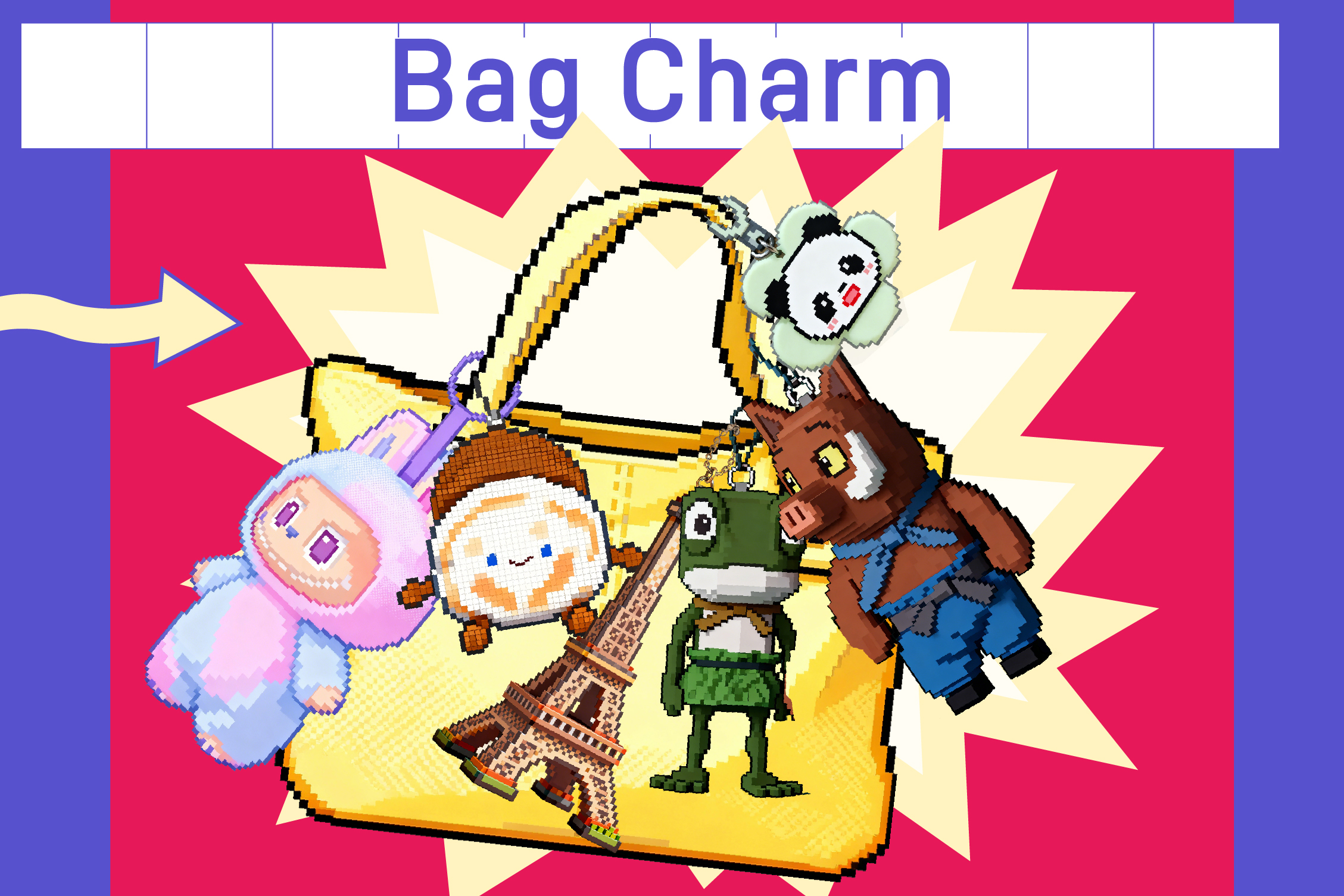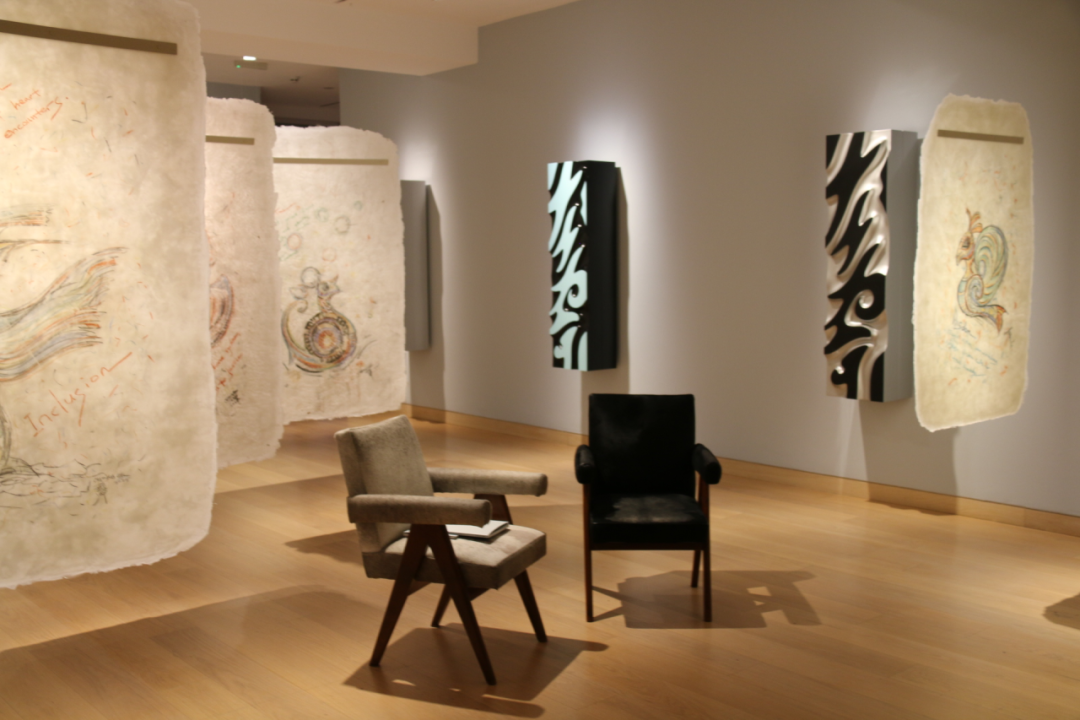From street fashion to emotional comfort, Chinese bag charms are emerging as a new medium for young people’s self-expression and cultural exchange.
Right now, cute little accessories are taking over people’s backpacks. They’ve become everyone’s new “bag buddies.” From fluffy plush toys to creative cultural products, these buddies appear in every style. Some even carry a strong local flavour.
For example, in Changsha, Hunan, charms shaped like stinky tofu or spicy stir-fried pork have become viral sensations. Silly yet delicious-looking, they instantly grab attention. Meanwhile, in Hubei, a charm called “garlic bird”—a bird with a giant garlic bulb on its head—shot to fame. It sold out both online and offline, eventually turning into a “walking emoji” on young people’s bags.
Why Are Tiny Charms so Popular?
“Changing a charm feels like getting a brand-new bag.” In a cultural-creative shop in Beijing, Xu, a university junior, is happily choosing from a wall full of charms.
She loves collecting all sorts of trendy designs. Moreover, her choices shift with the season, the occasion, her clothes, or simply her mood. “If I wear a blue denim set, I pick a blue charm. When I feel cheerful, I hang a sun. On an average day, I choose a gloomy cloud.”
The shop’s whole wall bursts with options—classic anime, film merchandise, and original designs. Prices range from pocket-money cheap to a bit pricier. According to the shop owner, charm sales are strong. Furthermore, IP collaborations fly off the shelves. “For example, charms from the film Nobody once sold around 50 a day.”

Young people love charms partly because they’re affordable. A tiny purchase delivers a big lift in mood.
Meanwhile, Xiao Yang—a young office worker in Beijing—treats his charms as “a second business card.” Two charms hang on his commuting backpack. “One represents my hometown, Datong, in Shanxi. The other comes from a film I adore, Ne Zha.”
For many people, charms do more than decorate. They express interests, taste, and personality. Even better, they work as mini “emotional rescue kits.” Unlike bulky figures, these small trinkets are light, portable, and always close by.
Zhang, who started working only six months ago, proudly shows her global charm collection. “Each charm is a memory. The Eiffel Tower reminds me of studying in Paris. The panda takes me back to my trip to Chengdu with friends. They’re my ‘visual diary.’ One quick glance calms my nerves.”
Professor Wang Yan from East China Normal University notes that young people often don’t need charms to serve a practical purpose. “Their main value is emotional comfort. This type of emotional spending helps ease pressure and can, in fact, be beneficial.”
Chinese Charms Become Social Currency Abroad
In this niche world of bag-hangable collectable toys, one startup in Dongguan, Guangdong, went viral through quirky design alone. Its products now sell like hotcakes overseas. The founder recalled that one day, a customer from a large U.S. bookstore chain asked for wearable PVC products. The team then decided to put PVC items into small bottles and let people hang them instead. Surprisingly, Americans loved it.
Paofu Toys shows this trend clearly. The company made a big leap in 2020, when the founder’s pet cat inspired a new anthropomorphic IP. It quickly blew up online, and Paofu’s overseas social accounts surged in popularity. They even reached the top ranks among pet-themed accounts.
Today, Paofu sells Chinese designer toys across TikTok and YouTube. It partners with more than 30 domestic toy companies. Revenue from designer toys now makes up over half of its total. The company’s HQ sits in Guangzhou, while a 2,000-square-meter Brooklyn office handles overseas operations.
On social media, overseas creators unbox LABUBU charms and instantly rack up hundreds of thousands of likes. According to Pop Mart, overseas revenue grew 365%–370% in the third quarter of 2025.
Experts such as Liu Xiaobin, Vice-President and Chief Marketing Officer of MINISO, believe the charm market will continue expanding in many directions. On one hand, deeper cultural storytelling will turn charms into tiny cultural messengers. On the other hand, new technology will push their functions further. As a result, charms may evolve from simple decorations into daily companions with both practical and emotional value.
From street fashion to emotional comfort, from personal flair to cultural exchange, small charms are quietly powering a huge consumer world. And with more cross-industry collaboration, this tiny “bag buddy” is bound to unlock even bigger opportunities.
Additional reporting by Xinhua, CCTV, GMW.CN, Written by Yi Shen, Poster designed by Di Wang.
If you liked this article, why not read: 【Today’s Catchword】Why Does Northeastern China Still Stockpile Vegetables Every Autumn?











